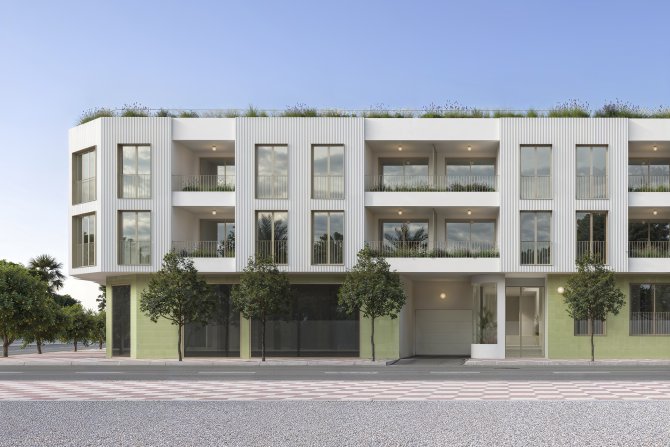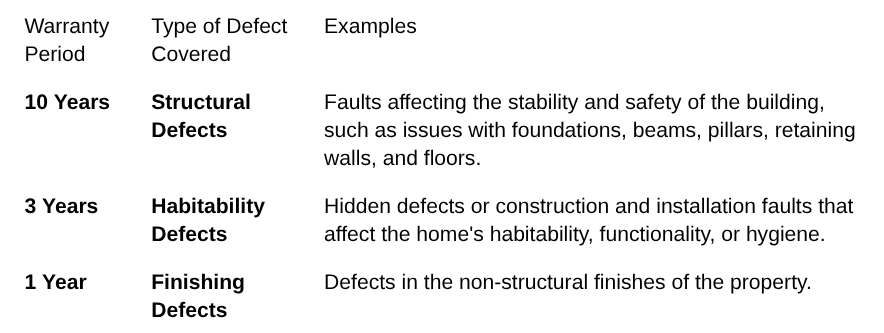Buying a brand-new property in Spain is an exciting prospect, but like any new construction, unexpected issues—from minor finishing defects to serious structural faults—can sometimes arise. Fortunately, Spain’s legal framework provides comprehensive protection for new homeowners through the mandatory new-build warranty, governed by the Building Regulations Act (LOE).

Understanding the duration and scope of this guarantee is crucial for any new homeowner. Here is a breakdown of what the Spanish new-build warranty covers and the deadlines for making a claim.
The Three Tiers of Warranty Coverage
The length of the warranty period in Spain is determined by the severity and type of defect, with all periods starting from the date the construction company officially delivers the work (not the date the property is purchased).

Crucial Point: Homeowners have an additional claim period. Regardless of the time left on the above warranties, buyers have up to two years from the moment they discover a defect to officially request its repair.
Making a Claim: Process and Best Practices
If you discover a defect, you must make a claim against the developer or any other party involved in the construction.
1. Establish Causation
A claim is only valid if there is a clear causation linking the defect directly to the construction process. A crack appearing in a pillar within the first few years is clearly attributable to construction, whereas the same issue appearing after several decades may be difficult to prove and more likely attributed to inadequate maintenance.
2. Notify the Developer
It is strongly advised to report these defects using a method that provides a reliable, verifiable record, such as a burofax (a certified communication service in Spain). This document serves as indispensable evidence should the issue escalate and require legal action.
3. Know Your Legal Deadlines
While the two-year period to act after discovering a defect is key, you must be careful with timing. If you send a burofax reporting a defect within the first year but fail to initiate legal action within two years of discovery, your right to claim for that specific defect is lost. You can, however, still make claims for any issues that arise subsequently.
Responsibility and Common Areas
Who is Responsible for the Repairs?
Responsibility is shared among all agents involved in the building process, including:
- The developer (promoter)
- The construction company
- Architects and surveyors
- Finishing contractors
While the developer typically assumes the bulk of the initial repair costs, they reserve the right to seek recovery from the specific agent (e.g., the plumber or architect) found responsible for the faulty work.
Dealing with Defects in Common Areas
If the damage is found in common areas (such as the facade, roof, community gardens, or shared electrical systems), the Community President or the Property Manager is responsible. Their role is to compile a comprehensive list of all defects and officially request rectification from the developer on behalf of the entire community.
The Developer's Claim Process
Developers usually have a streamlined process for handling new-build defect claims:
- Reception and Analysis: The developer receives and reviews the official claim.
- Technical Inspection: A technician is dispatched to the property to assess and verify the reported defects.
- Detailed Report: The technician prepares a full report documenting the condition and cause of the defects.
- Evaluation and Resolution: The developer decides whether to accept or reject the claim. If accepted, repairs are scheduled. If rejected, the homeowner or community may need to pursue legal action.
While legal proceedings can be lengthy and involve extra costs (solicitor’s fees, expert reports), a ruling in your favour will require the developer to cover the legal costs and carry out the necessary repairs.
Ultimately, the Spanish new-build warranty provides a robust safety net, giving buyers peace of mind and clear timeframes for ensuring their new investment meets the required standards of quality and safety.